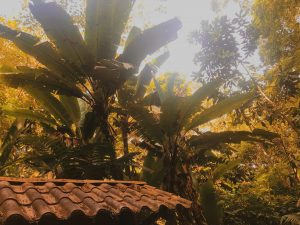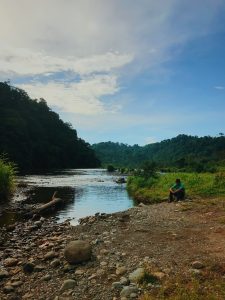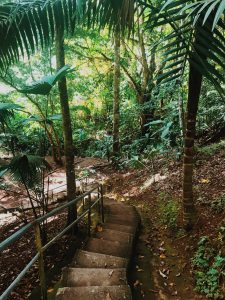

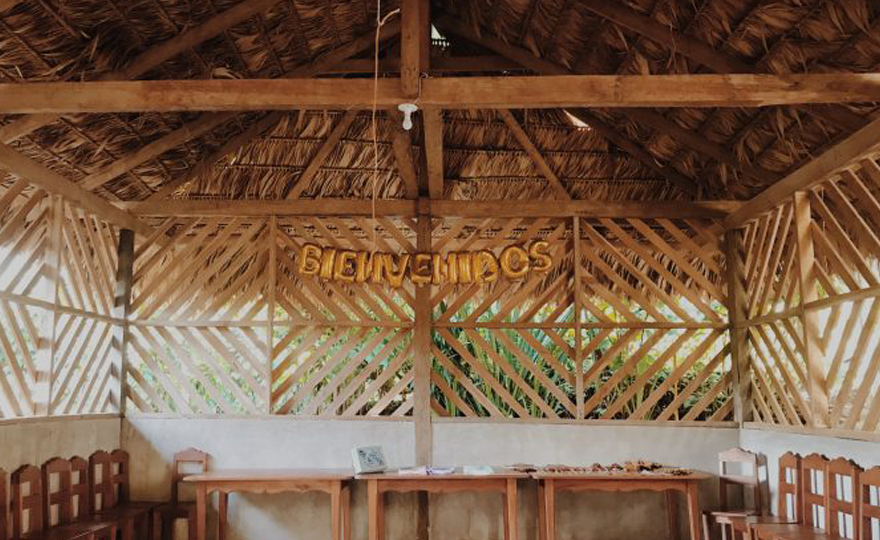
The next destination of our study tour, following our stop in Panama City was an indigenous community near Bocas del Toro, Panama. Although we slept most of the day when we initially arrived, this trip was by far one of my favorite adventures. We arrived at the Bongic indigenous community early in the morning, after an exhausting 12-hour bus ride from Panama City. Even after we arrived at the bus stop in Bocas del Toro, we still had to drive an additional thirty minutes (maybe even more) to this community. I expected to be in a remote location, very far and distinct from the city life.
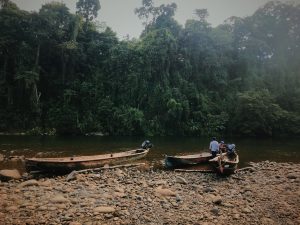
Students crossed the Teribe River to the Parque Internacional La Amistad.
My expectations were partially true. The Bongic community was once very secluded from the rest of the country. Up until recently, there was no road from Bocas del Toro to the indigenous people. Before the only way to access the community was by boat. Given this limited accessibility, the community is strongly characterized as self-reliant. For food, the community raises its own plants and modest livestock. It is very normal to see roosters and hens roaming throughout their neighborhood. They also constructed their own homes and other living spaces. Although these buildings were by no means luxurious, they were beautiful. The gardens, the landscape, and the livestock all created a harmonious living space.
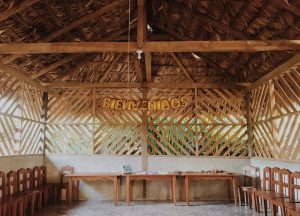
Bienvenidos. A warm welcome to the Bongic Community.
Our hosts prepared a total of four meals for us, which featured typical foods such as yuca or heart of palm. There were certainly some other things that I was not familiar with. Curiously, all of our meals were served on a plate or bowl, but also with a piece of leaf in between the plate and our food. The meals they prepared us demonstrated the generosity of the people. I could see how limited their supply of meat was, for example, yet they still chose to serve us meat.
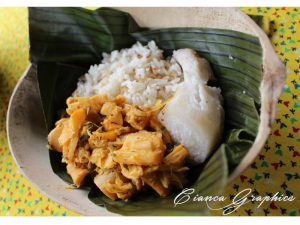
You can observe a typical meal prepared by the host, with small portions of hearty food served atop a piece of banana leaf.
Following our dinner, the children prepared a number of songs and dances for us. Then, the women told us stories about the community. I was particularly impressed with their story regarding how they founded a local indigenous women’s organization in 2010 called Organización de Mujeres Unidas Bonyic, which consists of 13 women and one male. Their organization is primarily responsible for the educational tourism that the Naso people have begun. This group of women petitioned funds from the government, affording them access to building materials to begin their project. Ultimately they constructed the Hostal Posada Media Luna, where we lodged.
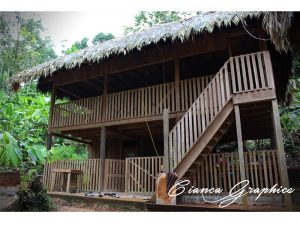
The Hostal Posada Media Luna can house up to 12 visitors at a time.
This group of women shared an impressive story of empowerment and triumph. Although they lacked formal education, they composed a compelling grant superior to other applicants. In this grant, they needed to articulate their business plan to develop their community through mediums of tourism, ethnobotany, and other indigenous traditions and knowledge. Upon receiving the grant, their next step was to design and architect dormitories and another area to host events. Finally, they realized their plan and worked laboriously to construct these buildings by hand, with very little help from their spouses. This feat highlights their abilities to overcome economic and educational barriers, in addition to personal struggles. They shared that on multiple occasions their homes and livestock had been completely wiped away due to heavy rains and flooding.
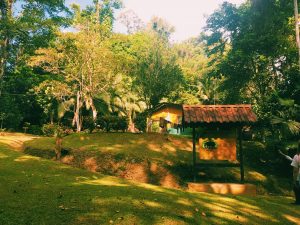
Students listened to the women leaders expound on the establishment of their organization Organización de Mujeres Unidas Bonyic.
Due to the hardships the community has faced, the women feel pressed to secure forms of preserving and edifying the livelihood of their community, as they have done with their initial project with Hostal Posada Media Luna. Their organization continues other projects that enriches the lives of its community members on group and individual levels. One organizer had the opportunity to travel to Cuba to attend a business-related workshop. The organization sponsors such events because they aspire to provide better services to their guest, with the aim of benefitting their community, as well. I would have never guessed the accomplishments of these humble women, but now I admire them more than they know. They are full of knowledge and wisdom, and I wish I could have spent more time listening to all of their experiences.
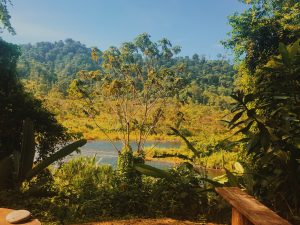
Landscapes of Parque Internacional La Amistad
